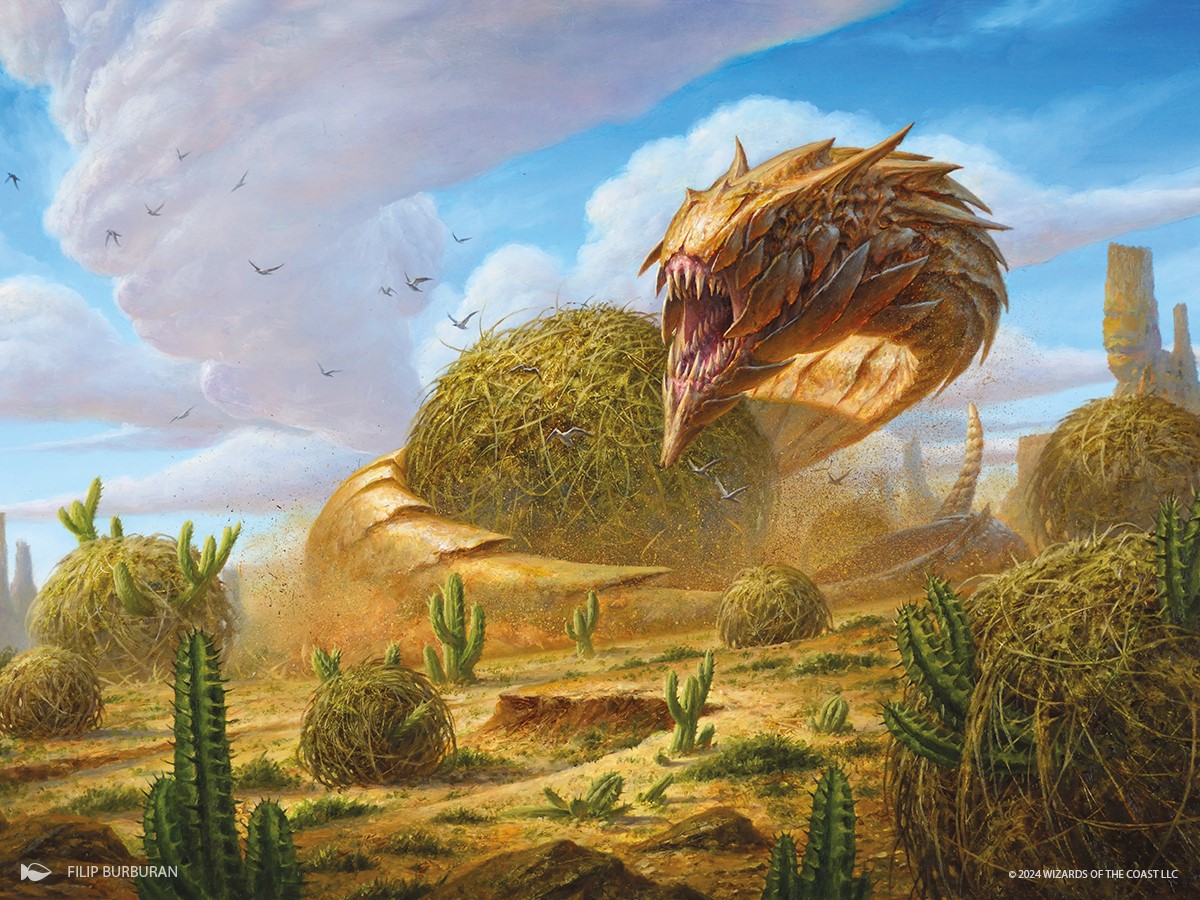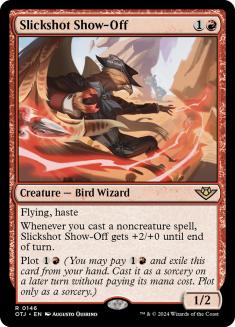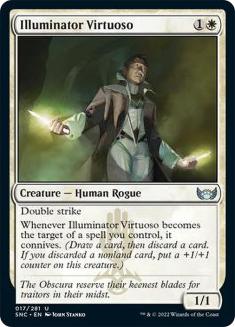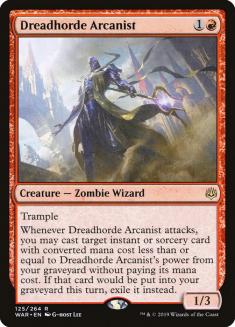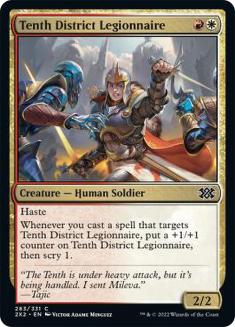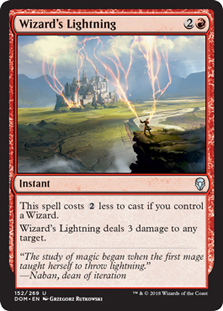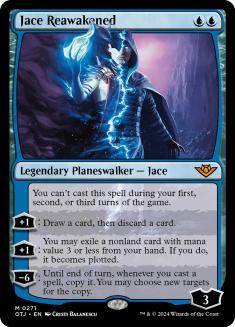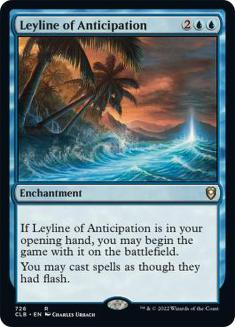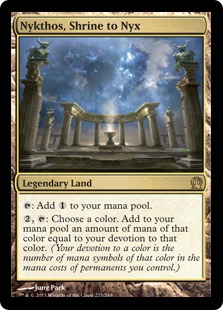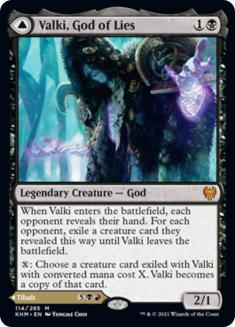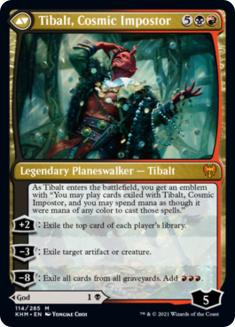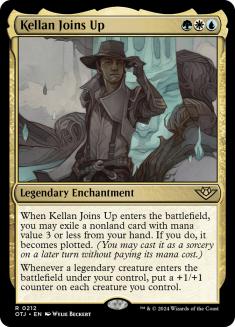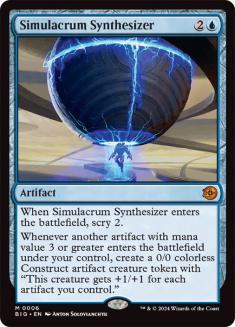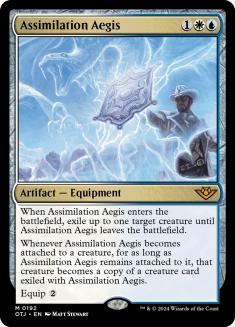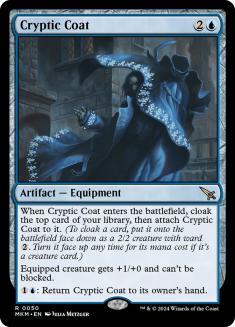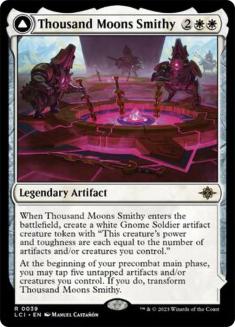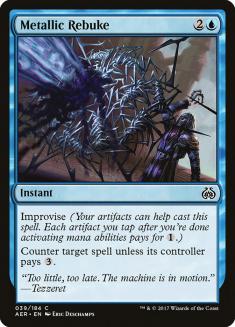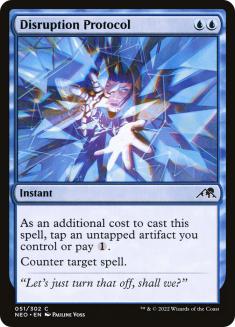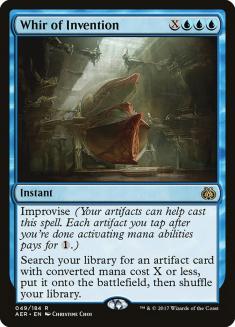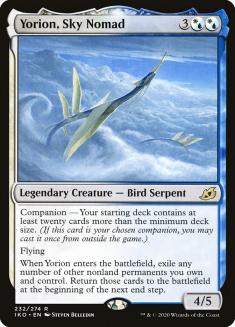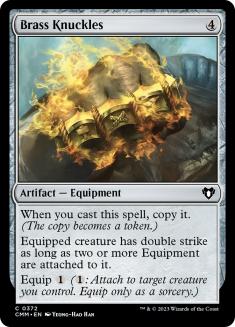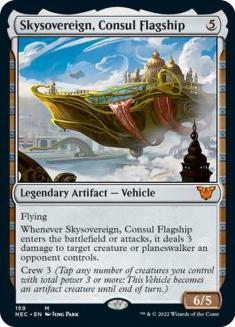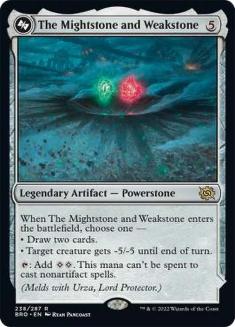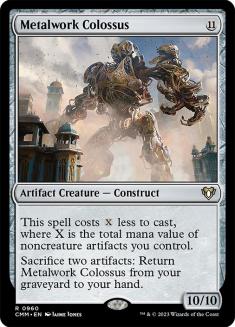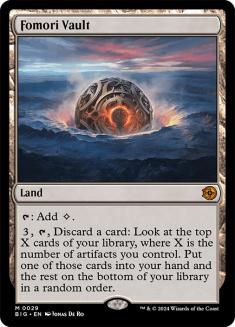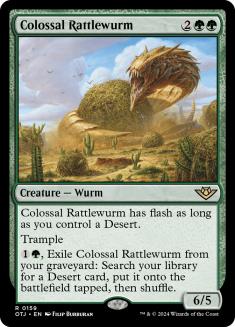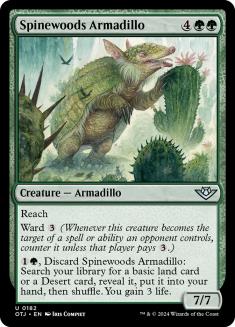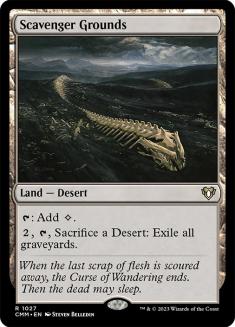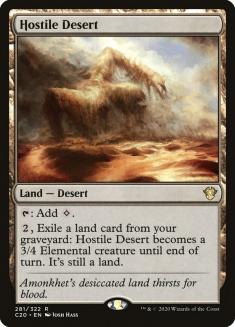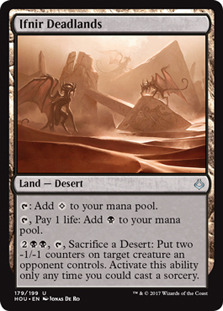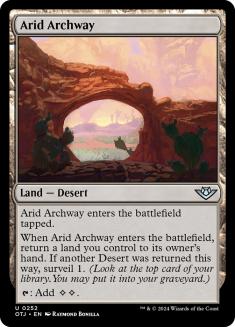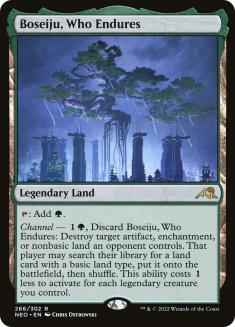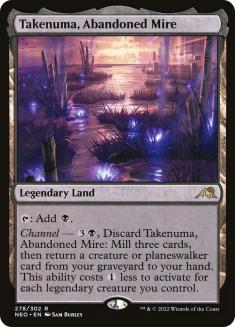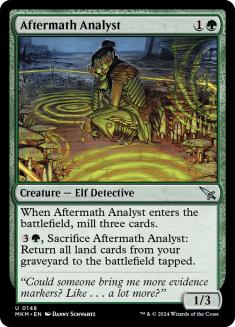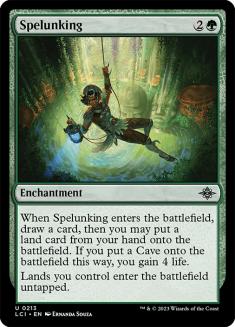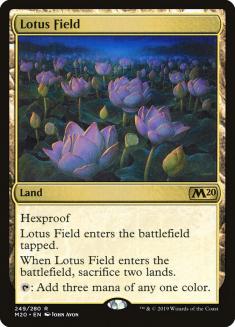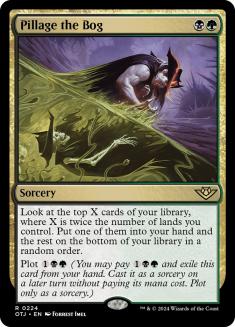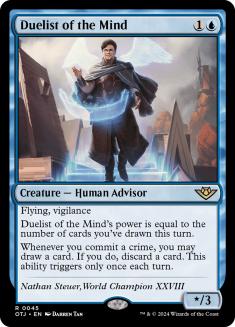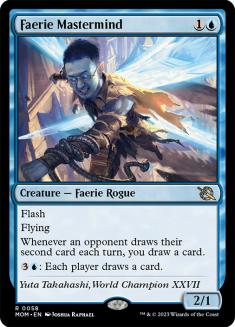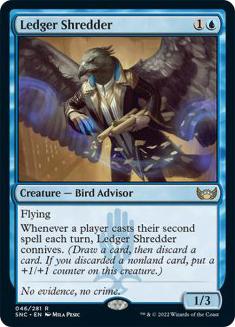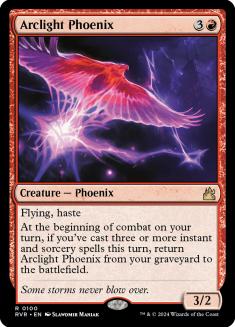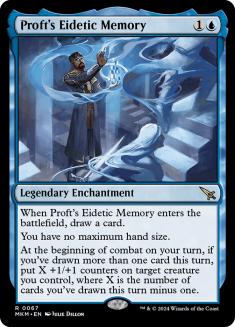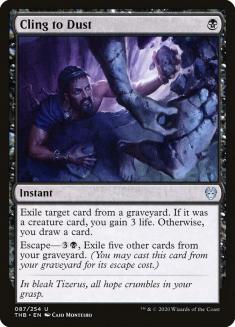It feels like the whole Multiverse showed up at Thunder Junction, and it’s hard to know who or what you’re meant to care about. Some explorers like Satoru, the Infiltrator can expect to feel at home in every format, but others will have to work hard to find a home. Pioneer is due for a shakeup after the Pro Tour, and it falls to the new cards to make that happen.
An Aggro Show-Off
Let’s start with a safe bet:
This boastful Bird gives various red aggro and aggro-combo decks another take on the popular Kiln Fiend template, but with the pairing of haste and flying that made Sprite Dragon so strong. Compared to Dragon, Slickshot Show-Off is more demanding – you need to be casting spells on your turn and the temporary bonus pushes you towards building one or two big turns rather than chipping away over time – but offers a more lethal burst of power if you can string several spells together. Izzet Prowess has been displaced by the resurgence of Izzet Phoenix, but Sprite Dragon often felt like the best threat in the deck, and doubling down on that effect lets you build the deck to be even more aggressive.
Boros Heroic is back on the map following its finals appearance at the Pro Tour and always looking for more good threats that fit its theme. The Heroic mechanic has diminishing returns there – a Monstrous Rage that targets your Tenth District Legionnaire isn’t targeting your Favored Hoplite – so these riffs on Prowess are the ideal way for secondary threats to stay on message. The plot mechanic looks less necessary or useful on Show-Off than on most other plot cards, but here it lets you pay for your threat now and cast it for free when you can keep up mana for your various protection spells.
Space and curve concerns may limit its potential here. You can only play so many two-drops, and other new contenders like Fugitive Codebreaker are squeezing former staples like Dreadhorde Arcanist. Slickshot Show-Off certainly earns an audition, though.
A more conventional light-’em-up red deck is a natural home – even before you realize that it has the right creature type for Wizard’s Lightning!
A Planeswalker Reawakened
For the more fanciful among you, everyone’s favourite (?) boy genius is here:
Jace is back and… better than ever? Worse than ever? He has certainly come a long way since his time as a founding father of the planeswalker card type in Lorwyn. The original Jace Beleren was a trailblazer for that alone, and the simplicity of his first form was crucial for introducing and selling enfranchised players on this strange new card type. Nowadays, bare-bones card draw and mill is boring – you have to do something weird and wacky to get noticed after this long.
‘Two-mana planeswalker’ is a tantalizing pitch – before you read the giant asterisk on that in the text box. You have to turn to other unique and bizarre cards like Leyline of Anticipation to flout that restriction. This is a lot to ask for unless you already have some interest in Leyline – conveniently, the Mono-Blue Devotion shell from the early days of Pioneer makes good use of both Leyline and this new Jace as sources of blue pips for devotion before Jace begins its mischief.
You can wait in line patiently or jump the queue – but for what? Jace has another safety valve built in, only joining plots for cards that cost three or less. By the time you have jumped through all these hoops to plot something, you could have cast it normally! Fans of Living End who are really down bad can try to scratch that itch again. The rest of us need to find a way to cheat that constraint too.
I know just the Devil for the job…
Lies, Cheats, and Enablers
Valki, God of Lies was already a wanted criminal for its infamous evasion of the mana value restriction on cascade, and it’s back to its old tricks. You can plot Valki with Jace and cast Tibalt, Cosmic Impostor for free next turn, with all your mana available to cast anything it exiles.
Is that worth it? Tibalt is no longer as intimidating as it was in its prime. Bring to Light casting Tibalt used to be a big draw to the colourful Omnath, Locus of Creation decks in Pioneer as the best finisher in the format, but now it’s just one more good option that doesn’t feel uniquely powerful. That’s a self-contained, one-card combo that doesn’t force you to fill your deck with other junk. This Jace setup requires several narrow cards in the right sequence. Even if you pull this off, controlling Tibalt for several turns doesn’t do much – largely because it will ‘draw’ you a bunch of useless Leylines, Jaces, and Tibalts!
If you’re determined to make this work, I think Kellan Joins Up is a more promising enabler. Some Rona, Herald of Invasion + Retraction Helix decks have adopted backup combos like Lukka, Coppercoat Outcast for Atraxa, Grand Unifier or a small Bring to Light package (which already incentivizes you to play Tibalt), and this is another candidate for those slots.
Synthesizer
The Big Score was originally intended as an epilogue set like March of the Machine: The Aftermath and follows its model of weird and wacky build-arounds. There’s enough support for an artifact theme just in The Big Score that it’s worth casting a wide net through the last few years of sets to see what comes together.
Simulacrum Synthesizer doesn’t do much up-front, though scry 2 helps to set up your next play that keys off it, but it tacks a must-answer threat onto other relevant artifacts. In Modern, you can go to town with Frogmite and Thought Monitor, but in Pioneer, you actually have to pay the sticker price for your spells. There are enough three-drop and four-drop artifacts to make that worthwhile, though.
Lands (32)
Spells (48)
- 1 Pithing Needle
- 4 Whir of Invention
- 4 Metallic Rebuke
- 4 Soul-Guide Lantern
- 4 Portable Hole
- 1 The Celestus
- 4 Moonsnare Prototype
- 4 Disruption Protocol
- 1 The Mightstone and Weakstone
- 1 Spring-Loaded Sawblades
- 1 Dusk Rose Reliquary
- 4 Fabrication Foundry
- 3 Thousand Moons Smithy
- 4 Cryptic Coat
- 4 Assimilation Aegis
- 4 Simulacrum Synthesizer

Each of the last few sets has delivered an intriguing mix of artifacts and artifact payoffs, even when the set has no explicit ‘artifact theme’. Cryptic Coat is already picking up steam in Pioneer as the perfect setup for Transmogrify or similar effects, and as a sideboard tool for Izzet Phoenix and Azorius Control against other midrange or control decks. Here, Coat is that same sticky threat but can return itself repeatedly to trigger Synthesizer on demand.
Control Tools
With enough artifacts, you unlock the best counterspells of all. Metallic Rebuke at one mana is exceptional, and Disruption Protocol is close enough to actual Counterspell. Whir of Invention can find the Synthesizer to start this song and dance, another artifact to trigger it, or a timely Dusk Rose Reliquary or Soul-Guide Lantern to stop the opponent in their tracks.
Classic control decks can freeroll a strong end-game by expanding to fit Yorion, Sky Nomad, but this deck gets to harness Yorion’s full power. Most of your artifacts do something when they enter, and all the big artifacts coming back at once will trigger Synthesizer, which can easily generate 30+ power in Constructs from a single Yorion turn. You can even blink a cloaked card from Cryptic Coat and bring it back in its true form.
A Colossal Aside
Synthesizer could find an even more offbeat home in the Metalwork Colossus deck that already needs a lot of larger artifacts. Brass Knuckles is not just a bizarre form of ramp for Metalwork Colossus; it’s a source of two Synthesizer triggers – and a giant Construct is the perfect threat to grant double strike.
This Whir deck needs a disciplined manabase for its namesake card, but Fomori Vault joins a long list of colourless lands that reward you for filling your spell slots with artifacts. Inventors’ Fair and Sanctum of Ugin headline the Metalwork Colossus deck, but other utility lands like Blast Zone are enticing too.
Ramp and Rattle
If this doesn’t speak to you, join me for a brisk jog through the Desert towards the promised land:
Creatures (14)
- 1 Shigeki, Jukai Visionary
- 3 Blossoming Tortoise
- 4 Colossal Rattlewurm
- 4 Spinewoods Armadillo
- 2 Harvester of Misery
Lands (28)
- 2 Forest
- 2 Swamp
- 1 Urborg, Tomb of Yawgmoth
- 1 Desert of the Indomitable
- 1 Desert of the Glorified
- 2 Scavenger Grounds
- 2 Hostile Desert
- 1 Ifnir Deadlands
- 1 Hashep Oasis
- 1 Field of Ruin
- 1 Castle Locthwain
- 1 Hive of the Eye Tyrant
- 1 Lair of the Hydra
- 2 Boseiju, Who Endures
- 2 Takenuma, Abandoned Mire
- 4 Underground Mortuary
- 1 Festering Gulch
- 2 Arid Archway
Spells (18)

Colossal Rattlewurm is a lot. Every set has its own take on a big green four-drop, but Rattlewurm beats most of those straight-up on stats while dangling the promise of so much more.
Your reaction to Rattlewurm is a good test of your tastes as a deckbuilder and player. Are you drawn to the impressively large numbers in the corner and the dream of ambushing something in combat? Or do you view this as a unique ramp card or combo piece with an occasional backup mode?
In practice, Rattlewurm is so strong because it bridges that divide well. You may not be in the market for a normal ramp spell or ‘just’ a big creature, but it’s good enough in the other mode that you get to explore that other function and add a new element to your deck.
Desert Bounce
Going back to Amonkhet gets you a range of utility lands that happen to be Deserts, from a solid creature-land to maindeck graveyard hate in a Phoenix format.
As someone who has played (and replayed, and replayed…) many Simic Growth Chambers in Modern, I’m thrilled that Pioneer is getting its first official bounceland. Finding Arid Archway with Rattlewurm or Armadillo helps you make your land drops and gives you the form of card advantage that made bouncelands so powerful in slower games, with additional card selection on the house if you can pick up a Desert – and, if that Desert has cycling, you can convert that into a new card too!
Bouncelands add another dimension to the channel lands that are everywhere in Pioneer. You can expect any green deck to have a Boseiju, Who Endures and every black deck to have a Takenuma, Abandoned Mire, but if you are forced to play one as a land drop early, you lose access to it. Arid Archway lets you pick that up in a pinch later – which, in turn, means an effect that puts a land directly onto the battlefield can indirectly search up a channel land, given enough time.
Analyst Meets Amulet
The Aftermath Analyst deck from Standard and the Amulet Titan shell in Modern can meet in the middle in Pioneer, where they can take inspiration from the Lotus Field combo decks. A bounceland opens up new loops here – Analyst gets back Takenuma from the graveyard, Archway puts it back in your hand, Takenuma gets back Analyst – and pairs perfectly with cards like Spelunking. The top tier of Pioneer has ossified for now, but experiments like this will keep people like me engaged during the upcoming Pioneer season.
In a combo-focused ramp deck, Pillage the Bog looks more and more appealing. It’s acceptable as a Shimmer of Possibility to smooth things out early but starts to look more like a direct tutor once you have your engine in place. You want enough copies of your relevant cards to help those odds – it doesn’t play well with a toolbox full of one-ofs – but if your deck leans on a specific card, this is a nice boost to its redundancy.
How about a World Champion?
Dueling Champions
Eighteen months after he showed off his unbelievable skill on Magic’s biggest stage, Nathan Steuer is finally immortalized on a Magic card. In Standard his likeness will fight with and against Yuta Takahashi’s for control of the skies.
In Pioneer, the most obvious comparison for Duelist of the Mind is Ledger Shredder in Izzet Phoenix. Duelist is also a discard outlet for Phoenix but can become a massive threat itself, turning Treasure Cruise into Giant Growth. Even if Shredder is better overall, you might want more than four Shredders – so how about some Steuers too?
The main problem is that Duelist is too picky. Shredder doesn’t care what spells you cast as long as they are spells – any pair of aimless cantrips gets you a Shredder trigger. Committing crimes requires removal spells that may not even have good targets – and, when they don’t, Duelist will be yet another poor draw.
Criminal Minds
The Dimir Phoenix deck that popped up briefly has more criminal tendencies thanks to Thoughtseize – but it suffered from being vulnerable to the same hate as Izzet Phoenix while executing the core Phoenix plan less consistently. We can build from the ground up around Duelist and a recent hidden gem instead:
Creatures (10)
Lands (20)
Spells (30)

Proft’s Eidetic Memory has impressed in an offshoot of Dimir Midrange in Standard, and it gets even better in a format with this many cheap cantrips. Treasure Cruise needs no help to take over games, but using it to find and build a big threat with Memory gives you a win condition to aim for that doesn’t itself rely on the graveyard.
Cling to Dust is a real workhorse here, committing a crime while drawing a card for just one mana and offering maindeck graveyard hate against Arclight Phoenix.
There’s more gold here waiting to be mined by creative brewers. Let’s hope some of them strike it rich in time for the RCQ season.

